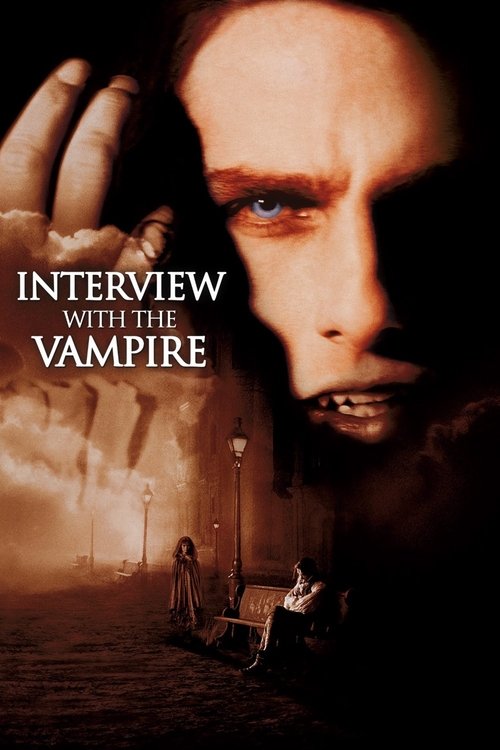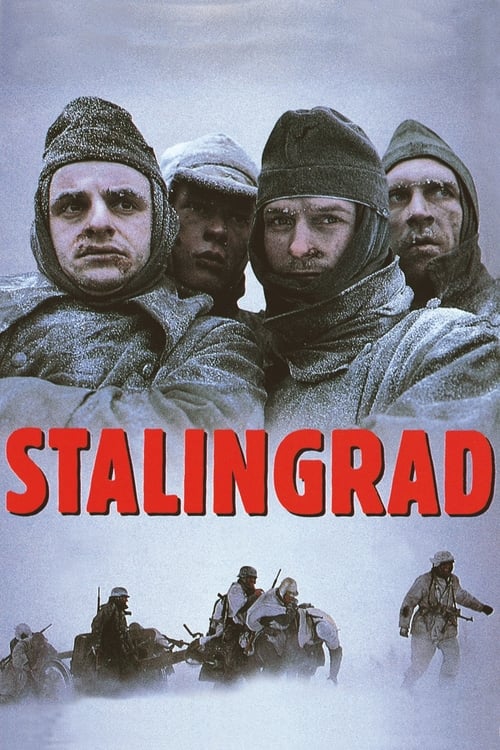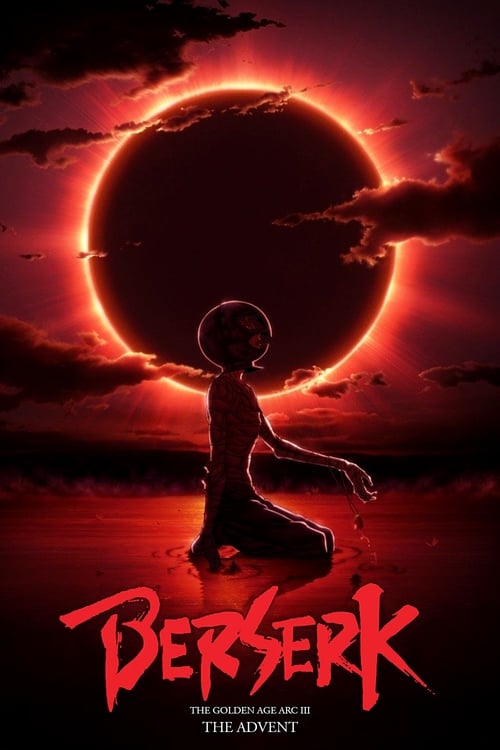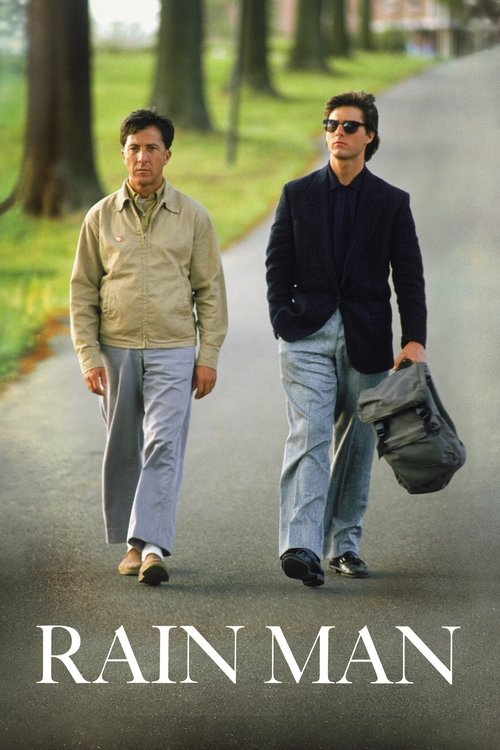
Interview with the Vampire
A vampire relates his epic life story of love, betrayal, loneliness, and dark hunger to an over-curious reporter.
Dialogues from Movie Interview with the Vampire
Quotes from Movie Interview with the Vampire
Sound Tracks from Interview with the Vampire by Gabriel Yared
Sympathy for the Devil
Sympathy for the Devil by The Rolling Stones, Played during the scenes in New Orleans
Using You
Using You by Sinead O'Connor, Used in a pivotal emotional moment
Cry Little Sister
Cry Little Sister by Gerard McMahon, Theme for the movie's darker elements
Download App
Memorable Scenes from Movie Interview with the Vampire
Louis Takes Lestat’s Offer
In a dimly lit room, Louis stands conflicted as Lestat, with a charismatic grin, offers him a new life as a vampire. The tension between Louis's desire for companionship and his moral hesitation is palpable. As Lestat shows him the thrill of immortality, the emotional weight of his decision weighs heavily. Louis ultimately accepts, marking the beginning of his struggle with his own nature. After this moment, Louis grapples with his humanity, which sets the stage for his character's deep conflict throughout the film.
Context: Louis, a man burdened with grief over his family's death, finds himself drawn to Lestat’s world. The allure of eternal life clashes with his moral integrity, propelling the story into a realm of emotional turmoil.
Claudia's Transformation
The atmosphere in the room shifts dramatically. Louis watches helplessly as Lestat turns Claudia, a little girl, into a vampire. The moment is haunting as Claudia's innocent laughter turns into an eternal cruel fate. The duality of her youthful appearance and her violent nature becomes a source of tension. This event leads to a fracturing of their family dynamic, with Claudia feeling trapped in her young body while yearning for maturity.
Context: Claudia's transformation is pivotal as it symbolizes the consequences of Lestat's reckless desire for companionship and immortality, leading to a love-hate relationship between her and the two vampires.
Claudia’s Rebellion
Claudia’s pent-up frustrations culminate in a fierce confrontation with both Louis and Lestat. Tiptoeing on the edge of rage, she throws accusations about their selfishness and her cursed life. The scene is charged as her young face exhibits a mix of fury and desperation. The confrontation changes everything for the trio, introducing a rift that will never fully heal.
Context: Claudia, having lived for decades in a child’s body, rebels against the limitations imposed by her makers. This scene marks her transformation from a victim into a formidable force, complicating the relationships further.
The Red Room
In a lavish but sinister setting, Louis finds Lestat feasting on a victim in the red-lit room. The scene is visually striking, showcasing the stark contrast between beauty and horror. Louis's horror is palpable as he confronts the depths of Lestat's depravity. This confrontation intensifies their relationship, with Louis now seeing Lestat as more of a monster than a mentor.
Context: This moment reveals Lestat’s true nature, emphasizing the moral cost of being a vampire and pushing Louis deeper into his conflict about his own identity.
Waste of Mortality
During a poignant conversation, Louis expresses his disillusionment with immortality, proclaiming that an eternal life devoid of humanity feels like a waste. This powerful dialogue resonates deeply, encapsulating his internal struggle. As he voices his pain, the weight of his words lingers, highlighting the haunting nature of his existence.
Context: This moment captures Louis’ existential crisis, establishing a theme that will echo throughout the film—what it truly means to live and feel as a vampire without the experience of mortality.
Claudia's Death
In a devastating and heartbreaking sequence, Lestat, believing he has saved Louis from a potential betrayal, kills Claudia. The scene is filled with raw emotion, from Claudia’s shock to Louis’s furious heartbreak. This act creates an irreparable divide, shattering their family bond and leaving viewers in stunned silence.
Context: Claudia's death serves as a turning point for Louis, forcing him into a choice: to embrace his darker side or seek vengeance. This moment encapsulates the tragic cost of the vampire lifestyle.
Louis’s Isolation
After Claudia's tragic death, Louis wanders through the streets alone. The visual of him amidst a bustling, unaware world creates a stark sense of loneliness. The pain in his eyes reflects a deep longing for connection, despite being surrounded by life. His sorrow and anger at both Lestat and his own existence resonate heavily.
Context: This scene highlights Louis’s profound sense of isolation and the theme of loneliness in love, underscoring the sacrifices made for immortality.
The Betrayal
When Lestat confronts Louis for deciding to leave, the air is thick with tension. Lestat's charismatic mask drops slightly, revealing his darker tendencies as he appeals to Louis's love for him. The intense exchange, laced with regret and bitterness, showcases their tumultuous relationship and the ultimate betrayal of trust.
Context: This moment solidifies the fractured bond between Louis and Lestat, emphasizing themes of betrayal and the moral complexities of their vampire existence.
Melancholy of Immortality
During a beautifully shot scene, Louis sits alone in a dark room, contemplating the centuries that have passed. The visuals of shifting shadows and flickering candles create a poignant atmosphere of reflection. The haunting score accentuates his sense of loss, as he ponders both the beauty and futility of his endless life.
Context: This scene captures the emotional weight of Louis's character, emphasizing the core theme of what it means to be immortal and the melancholic burden that accompanies it.
The Arrival of the Interviewer
The tension in the room rises as the interviewer listens to Louis's story. The curious glances and subtle skepticism create an engaging dynamic. Louis, weary yet determined, begins to recount his tale with impactful introspection. This moment signifies the beginning of his catharsis as he confronts his past.
Context: This setup introduces the story's narrative style, bridging present-day reflections with historical experiences, which adds depth to Louis’s character exploration.
The Climax at the Theater
As Louis and Claudia prepare to confront Lestat, the scene transitions to an extravagant theater. Tension mounts as they plot revenge. The theatrical setting contrasts beautifully with their dark intentions, creating a visually captivating scene filled with suspense and anticipation.
Context: This moment ramps up the stakes for the characters and adds a layer of intrigue, as their revenge is set against the backdrop of performance and illusion.
Louis vs. Lestat Showdown
When Louis finally confronts Lestat, emotions explode. Their exchange is fiery, a culmination of years of pain, betrayal, and passion. The dialogue is sharp and poignant, like swords clashing. The visuals reflect the chaos of their shared history, culminating in a powerful standoff that defines both their characters.
Context: This scene marks a significant turning point, showcasing Louis’s growth as he confronts his fears and his maker, embodying the struggle between their different philosophies of existence.
Lestat's Downfall
In a heart-wrenching turn of events, Lestat is left vulnerable and defeated. As the camera zooms in on his face, the audience witnesses the depth of his despair. This moment of vulnerability is layered, revealing both the power and tragedy of his character, making him more than just a villain.
Context: Lestat’s downfall serves to challenge the perception of villainy and morality within the vampire world, deepening the complexity of characters and their relationships.
Emotional Farewell from Claudia
As Claudia is about to meet her end, she helps Louis reconnect with his humanity one last time. Her heartfelt words of love and betrayal echo in the air, captivating viewers with their emotional weight. This moment serves as a profound farewell, emphasizing both her tragic fate and her impact on Louis's life.
Context: This farewell moment symbolizes lost innocence and the harsh lessons of immortality, cementing Claudia's role as a catalyst for Louis's evolution.
Aftermath of Revenge
After the tumultuous events of betrayal and revenge, Louis stands outside as the dawn begins to break. The soft light contrasts with his dark past, revealing the yearning for redemption. The quiet emotional turmoil in his expressions pulls viewers into his internal conflict, showcasing the aftermath of actions taken.
Context: This scene underscores the theme of redemption, as Louis realizes that revenge leads only to more pain, prompting deeper reflections on his choices.
Louis’s Return to Humanity
In a serene moment, Louis finds solace as he watches the world go on without him. His realization of the value of life creates a bittersweet feeling. This quiet reflection marks a shift towards acceptance, allowing viewers to feel his struggle and transformation.
Context: This scene emphasizes the importance of appreciating mortality and life’s fleeting moments, aligning with Louis’s overarching journey throughout the story.
The Final Interview
As the lonesome interview concludes, Louis reflects on the nature of existence with heartfelt honesty. His final words resonate deeply, encapsulating his entire journey. The raw emotion in his voice moves the interviewer and audience alike, creating a connection that transcends the screen.
Context: This closing moment ties back to the themes of love, loss, and the search for purpose within immortality, leaving the audience with a lingering sense of empathy for Louis.
A Glimpse of Hope
As the film comes to a close, Louis walks away from the interview with a sense of peace, suggesting that reconciliation with his past is finally at hand. The visuals show him stepping out into a populated street, symbolizing a small renaissance. The hope that life continues beyond sorrow offers an emotional catharsis to viewers.
Context: This concluding scene provides a sense of closure while also emphasizing the idea that even in darkness, hope and connection are possible, aligning with the film's core message.
Lestat’s Regret
In a poignant moment of vulnerability, Lestat admits to feeling regret for his actions. His words carry a weight of sorrow that is unexpected for an apparent villain, showcasing the complexities of his character. The moment invites reflection on the human condition within supernatural beings.
Context: This scene reveals that even those who appear monstrous have their struggles and regrets, deepening the emotional complexity of the story.
The Complex Nature of Friendship
During a reflective dialogue, Louis and Lestat share a rare moment of openness. Their conversation swings from hostility to understanding, illuminating the complexities of their relationship. The subtle expressions and tone create a rare connection amidst their darkness.
Context: This scene encapsulates the idea that even those created from bitterness can experience moments of connection, exploring the fragile nature of friendship.
Claudia’s Childlike Wonder
In a flashback to a happier time, Claudia is seen dancing under moonlight, embodying a child’s innocence. The beautiful visuals paired with joyful music offer a sharp contrast to her tragic end. This scene evokes nostalgia, capturing audiences’ hearts before the shift to darker themes.
Context: This moment highlights the innocent beauty of Claudia’s character before her transformation, reinforcing the tragedy of her arc.
The Eternal Hunger
In a visually striking portrayal, the need for blood haunts Louis as he’s confronted with the realities of his existence. The dire visual of his internal struggle captures the essence of his anguish, illustrating the eternal hunger that defines vampire life. This haunting imagery lingers, emphasizing the film’s darker undertones.
Context: This exploration of hunger and need becomes central to understanding Louis’s character, illustrating the cost of living as a vampire.
The Search for Meaning
In a soul-searching moment, Louis seeks out the answers to his existence, visiting places from his past. The montage of memories and locations creates a poignant reflection of his journey. The visuals are nostalgic and moving, emphasizing his quest for meaning.
Context: This sequence strongly connects to the film's theme of seeking redemption and understanding one’s place in the universe.
End of an Era
As the story wraps up, viewers witness the end of Louis’s long struggle. His final reflections embody a sense of acceptance, offering a bittersweet closure. The images of the vibrant life around him serve as a hopeful contrast to the darkness he has endured, creating a powerful juxtaposition.
Context: This culmination signifies both endings and new beginnings, unifying the threads of struggle and resolution that have run throughout the film.
Download App








